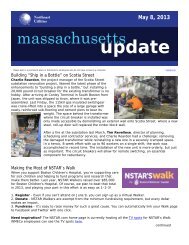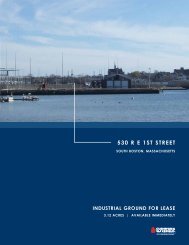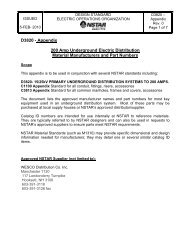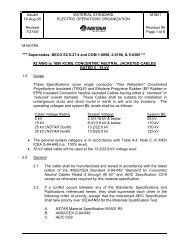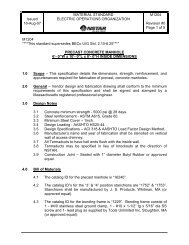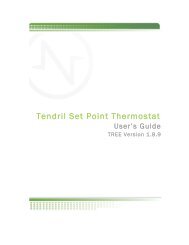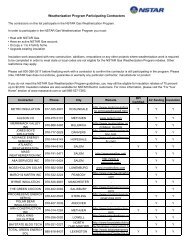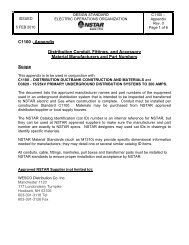INFORMATION & REQUIREMENTS ELECTRIC SERVICE - NStar
INFORMATION & REQUIREMENTS ELECTRIC SERVICE - NStar
INFORMATION & REQUIREMENTS ELECTRIC SERVICE - NStar
You also want an ePaper? Increase the reach of your titles
YUMPU automatically turns print PDFs into web optimized ePapers that Google loves.
GENERAL LAWS<br />
GENERAL LAWS<br />
the provisions of this section in excess of the actual damages<br />
sustained by the corporation or person manufacturing, distributing<br />
or selling such electricity or gas shall be paid to the<br />
commonwealth; provided, however, that if a municipal lighting<br />
plant brings an action pursuant to this section such damages in<br />
excess of the actual damages shall be paid to such municipal<br />
lighting plant.<br />
COMING INTO CLOSE PROXIMITY TO HIGH<br />
VOLTAGE LINES<br />
M.G.L. Chapter 166, Section 21A<br />
No person shall require or permit any employee to operate a<br />
crane, power shovel or other such types of construction equipment<br />
in close proximity to overhead high voltage lines; nor to enter<br />
upon any land, building or other premises to engage in<br />
construction work, including excavation, demolition, repair or<br />
other such work or to erect, install, operate or store in or upon<br />
such premises any machinery or construction equipment, including<br />
well drilling, pile driving or hoisting equipment, where it is<br />
intended to perform such work or operate such equipment in<br />
close proximity to overhead high voltage lines unless and until<br />
contact with said high voltage lines has been effectively guarded<br />
against in the manner hereinafter prescribed. For the purposes of<br />
this section and sections twenty-one B to twenty-one G the words<br />
“in close proximity to overhead high voltage lines” shall mean<br />
within six feet of such lines.<br />
PROTECTION OF OVERHEAD HIGH VOLTAGE LINES<br />
M.G.L. Chapter 166, Section 21B<br />
The operation or erection of any tools, machinery or equipment,<br />
or any part thereof capable of vertical lateral or swinging motion;<br />
the handling or storage of any supplies, materials or apparatus or<br />
the moving of any house or other building, or any part thereof,<br />
under, over, by or near overhead high voltage lines shall be<br />
prohibited, if at any time during such operation or other<br />
manipulation it is intended or necessary to bring such equipment,<br />
tools, materials, buildings or any part thereof within six feet of<br />
such overhead high voltage lines, except where such high voltage<br />
lines have been effectively guarded against danger from accidental<br />
contact, by either:<br />
1. The erection of mechanical barriers to prevent physical<br />
contact with high voltage conductors; or<br />
2. De-energizing the high voltage conductors and grounding<br />
where necessary. Only in the case of either of such exceptions<br />
may the six foot clearance required be reduced.The required<br />
six foot clearance shall not be provided by movement of the<br />
conductors through strains impressed by attachments or<br />
otherwise upon the structures supporting the overhead high<br />
voltage lines, nor upon any equipment, fixtures, or<br />
attachments thereon.<br />
If neither (1) or (2) are practicable in the opinion of the<br />
utility company or other owner or (operator) of such<br />
overhead lines, and it is necessary to temporarily relocate the<br />
high voltage conductors, mutually agreeable arrangements<br />
shall be made with the owner or operator of such lines for<br />
their temporary relocation.<br />
3. In addition to (1) and (2), an insulated cage type guard or<br />
other effective protective device of a type approved by the<br />
commissioner of labor and industries shall be installed about<br />
the boom or arm of all hoisting or other such construction<br />
equipment, except backhoes or dippers, being operated in<br />
proximity of overhead high voltage lines.<br />
4. All mechanical barriers and all insulated protective devices<br />
referred to herein shall be of such character and construction<br />
140 141



